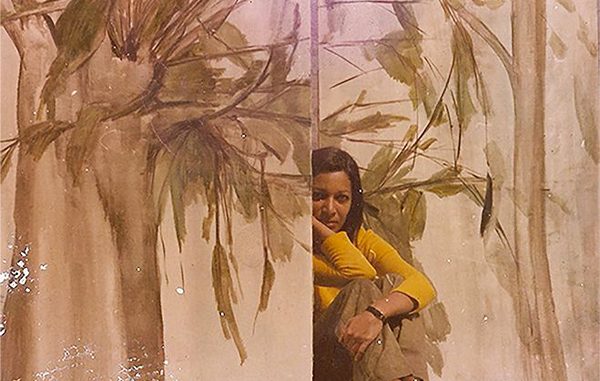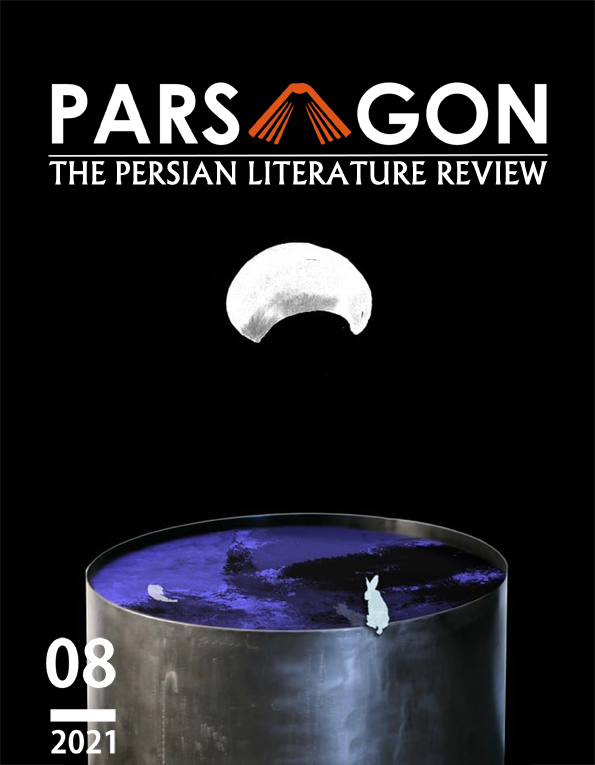
Farideh Lashai (1944–2013) stands as one of the most original and influential figures in modern and contemporary Iranian art. Born in Rasht, Iran, she left for Europe in her youth, studying German literature in Munich and later enrolling at the Academy of Fine Arts in Vienna, where she pursued decorative arts and glass/crystal design.[1] Early in her career, she worked in applied arts — notably with the Riedel Studio in Austria — designing crystal-ware and ceramics, a dimension of her practice that would later inform her painterly sensibility.[2] Returning to Iran, Lashai gradually shifted her attention to painting and mixed media work. Over a career spanning more than five decades, she became known not just as a painter but also as a printmaker, video artist, writer, and translator. Her autobiography Shal Bamu is among her notable literary contributions.[1]
Lashai’s significance in Iranian arts arises from her ability to weave together Eastern cultural registers — especially Persian lyricism, poetry, and miniature traditions — with a modern, abstract language.[3] Her works often avoid literal representation, preferring to evoke the essence of nature, memory, and emotional states.[1] She once noted that she did not aim to depict every detail, but rather to render a symbolic, slightly ambiguous perception of the natural world.[1] Her paintings are gestural, atmospheric, and lyrical. Many of her later works employ layered washes, scribbles, delicate lines, and modulations of tone — a visual grammar suggesting shifting light, memory, and ephemeral landscapes.[4] In her final years, Lashai began integrating projection, video, and sound onto painted surfaces, creating works where images seemed to float, fade, or move across the canvas.[5] In exhibitions such as Thus in Silence in Dreams, she fused animations or filmed sequences with paintings to intensify narrative, memory, and emotional layering.[5] She explored concepts such as memory, identity, nature, loss, and the passage of time. Her art carries a melancholic introspection, evoking a longing for connection between inner and outer landscapes.[4] Some projects also responded to political history — most notably her engagement with Goya’s Disasters of War, which she recontextualized through installations and projections.[1] Yet Lashai never reduced her work to illustration or polemic; the political always appeared as a subtle, haunting presence rather than explicit commentary.[6]
Within the Iranian art scene, Lashai occupied a distinctive position. She bridged tradition and experimentation, drawing on cultural memory while pushing into abstraction, multimedia, and transnational dialogue.[6] In the late 1990s, she co-founded the Dena Group, a collective of twelve Iranian women painters that promoted collaboration and increased visibility for women in the arts.[1] Critics have emphasized her “art of complexity” — deeply tied to individuality and identity, but always informed by her lived experience in Iran.[7] Even after her death in Tehran in 2013, following a long battle with cancer,[1] Lashai’s legacy continued through major retrospectives, such as the Sharjah Art Foundation exhibition,[8] and posthumous international presentations that positioned her experimental works alongside global contemporaries.[5]

The cover of volume #08 displays a detail of an artwork (video still) titled “Catching the Moon” by Farideh Lashai, created in 2010-13.
[1]: “Farideh Lashai.” Wikipedia. Link
[2]: “Farideh Lashai.” Advocartsy. Link
[3]: “A Rabbit’s Tale: Farideh Lashai.” Harper’s Bazaar Arabia. Link
[4]: Media Farzin, “Farideh Lashai (1944–2013).” Artforum. Link
[5]: “Farideh Lashai: Thus in Silence in Dreams.” Leila Heller Gallery. Link
[6]: “Farideh Lashai.” Artnews / Art in America Review. Link
[7]: “Farideh Lashai Rocks Tehran Museum of Contemporary Art.” Artnet News. Link
[8]: “Farideh Lashai at Sharjah Art Foundation.” 1stDibs Introspective. Link

Leave a Reply